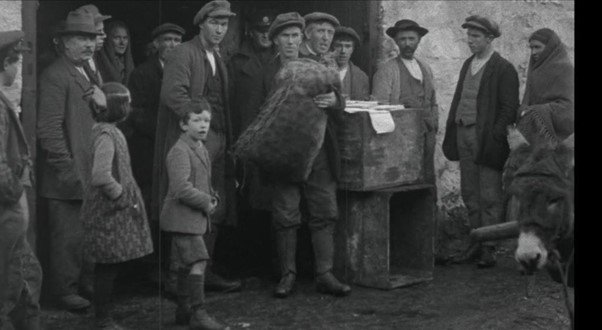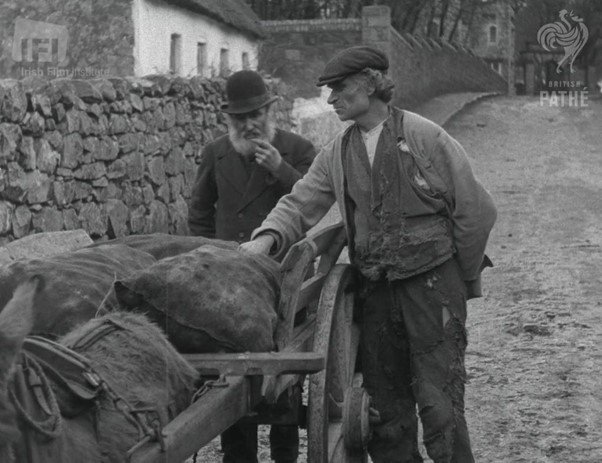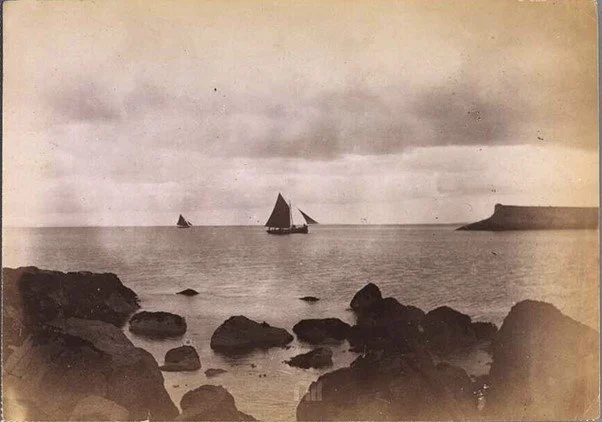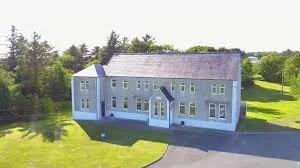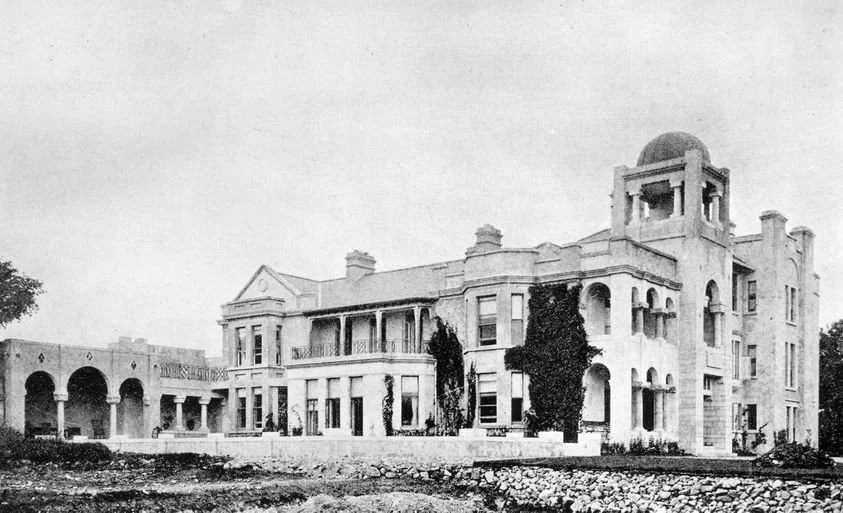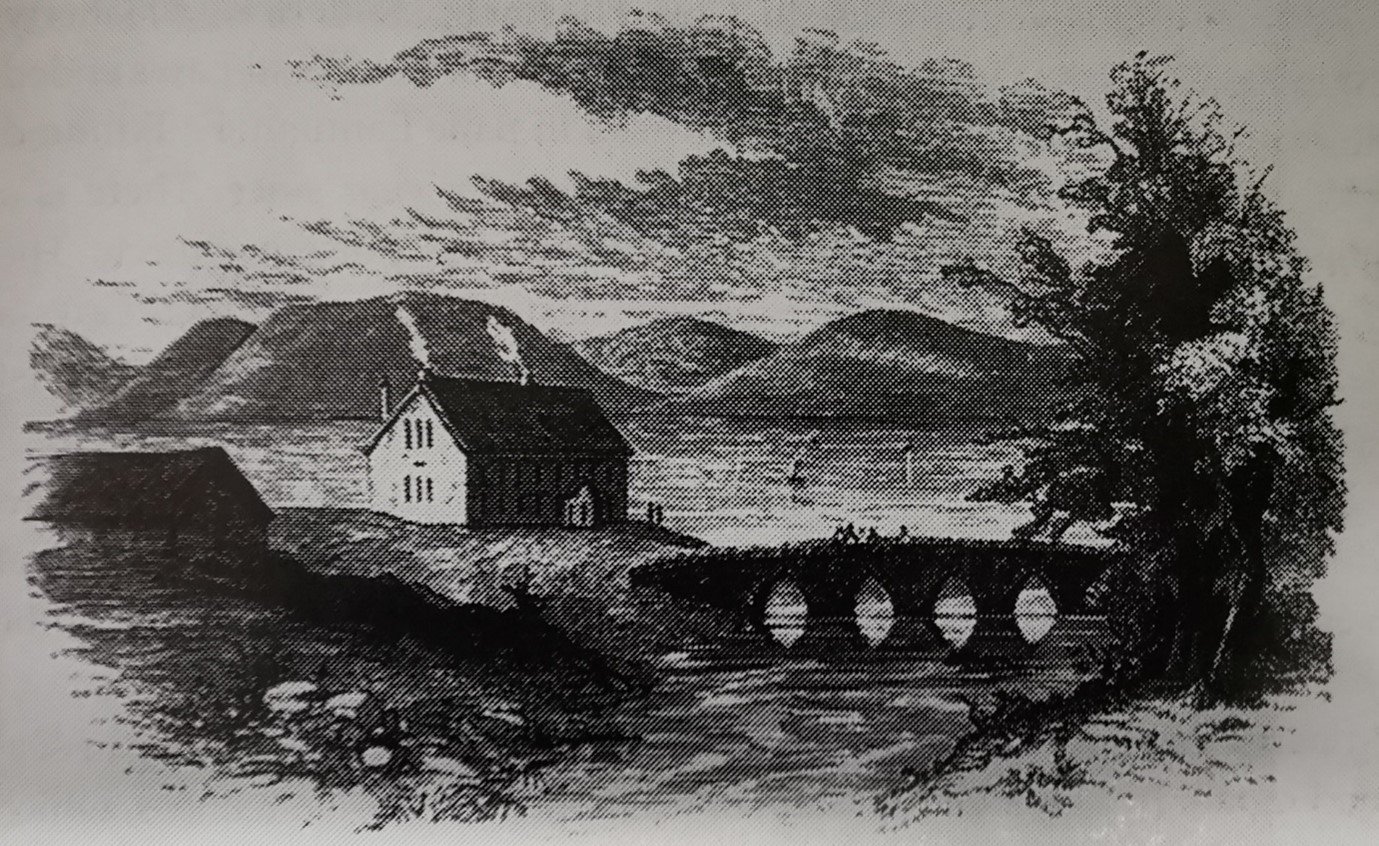
History
A Brief History of Spiddal
According to ‘The Book of Galway’ by Aurthur Flynn there is an account of a townland called Ballynaspiddell dating back to 1585.
The name Spiddal in Irish is An Spidéal, derived from Ospidéal (hospital). The Knights Hospitaliers are believed to have established a hospital here around the fourteenth century. It may also have been considered a “Hospitality House”. Close to the village there is a bridge over the Boluisce river. In early times the village was also known as Baile an Drouchid (the town of the bridge). Which was built in the 1660’s. There are two possible origins of the name:
⦁ From St Enda – Guest house (hospitality) attached to the monastery established by St Enda
⦁ Isolation hospital for Galway city, outside the city for lepers
School House/ Orphan Refuge
Image: Spiddall 1860 (Father Kyne P.P)
Barna – A History
St Enda’s Church
The remarkable little Hiberno/ celtic-Romanesque church of St Enda, Cill Éinde, was built in 1904 – 1907 by the Architect William Scott at the request of Martin Morris, the second Lord Killanin. In the adjoining cemetery are the remains of the old parish church believed to have been built in 1854 by PP Fr McGrath, a Claddagh man. Closer to the sea there is a small 13th Century church still in good repair. Just outside the village is the Mass Rock, Carraig an Aifrinn, which was used during penal times, was located in Baile Eamonn. Fr. Edmund Ffrench said mass there in the 1690’s and that tradition was repeated for many years after. After penal laws a Mass House, but not a church, was allowed for Catholics.
For more information on St Enda’s church visit
Spiddal House
On the right hand side of the main road leaving Spiddal village is Spiddal House, situated in a magnificent wooded demesne. The property was once known as Bothua and was part of the Blake estate. The house was built at the beginning of the nineteenth century for the Morris family, who were landlords of the village. During the civil war of 1922 the house was burned but was rebuilt five years later. One of the best known members of the Morris family was the 3rd Lord Killanin, son of Martin Morris and the 6th president of the International Olympic Committee. His son the 4th Lord Killanin became a film producer.
The Killanin family name was Morris, one of the old Connaught Catholic families who avoided the cruel ethnic cleansing of the Penal Laws and retained their land, religion and nationality. Lord Killanin married in 1945 Sheila Dunlop, the daughter of the Rector of Oughterard.
Na Céibhs
Such was the importance of the sea to the area that a safe harbour was a vital piece of infrastructure established in the village, over 200 years ago. Alexander Nimmo (1782-1832), the great Scottish engineer, built the smaller pier in Spiddal , known as An tSean Céibh/ the old pier, in the 1820’s. The new pier was built by Lord Killanin and finished in 1871.
Image: Hookers sailing off An Céibh Nua, Spiddal: circa 1880-1900: National Library of Ireland
Colaiste Connacht
Coláiste Chonnacht, founded in 1909, one of the oldest Irish colleges in the country, which continues to attract students each summer to learn the language.
The Rundale System of land tenure usage applied: each house with a small tillage patch and commonage for grazing. Seaweed was used for tillage fertilizer. The landlord in the 1880’s was Lynch-Coleman, who lived at where Colaiste Chonnacht is today. The landlord wanted a man’s day load of seaweed in lieu of a day’s labour, but the people objected. They preferred to work the required 14 days per annum for the Big House. Their resolution vis a viz the seaweed became the catch phrase “Ni inniu, na go deo”, not today, or ever.
Irish language was always the main language of the people but there was English too, because of the British garrison there. During the Great Famine, a prosletyzing school “An Nead” was established at where the secondary school is now. The Nead name remains as a pub on the main street.
The Irish famine
Like much of the west of Ireland the land in the area was of poor quality and most people survived as subsistence farmers and fishermen.
The Great Irish Famine of the 1840’s was devastating across the west of Ireland. It was said that the mass evictions of landlords such as Patrick Blake of Spiddal were among the worst in Ireland. A report to the House of Commons at the time highlighted that families were evicted by force, their houses demolished and their roofs burned. Even small huts that they tried to erect to protect themselves from the biting weather were ransacked, such that they had to seek shelter in the workhouse. The road adjoining the Workhouse gate was regularly thronged with up to 500 starving people.
It was followed by second famine in 1879-1880. During this time the poor rural community, surviving on subsistence farming availed of food from the road building Relief Work. Bothar Bui in Knock = Minne Bui (Na Minne) = Yellow Meal; the wages of the road building Relief Work workers during this period.
Into the 20th century, through the World Wars, rationing was enforced in Ireland. These images below, courtesy of Joe Francis, show potato seed being rationed to the local farmers. These images are taken at the bottom of Baile Ard. Just past where the Spar shop is located today.
St Enda, the patron saint of Spiddal, likely stayed in Spiddal on route to establishing a monastery on Inis Mor. The original population in the time of St Enda was very low, mainly fishermen. There were no roads until about 300 years ago, so people would have travelled around by sea.
